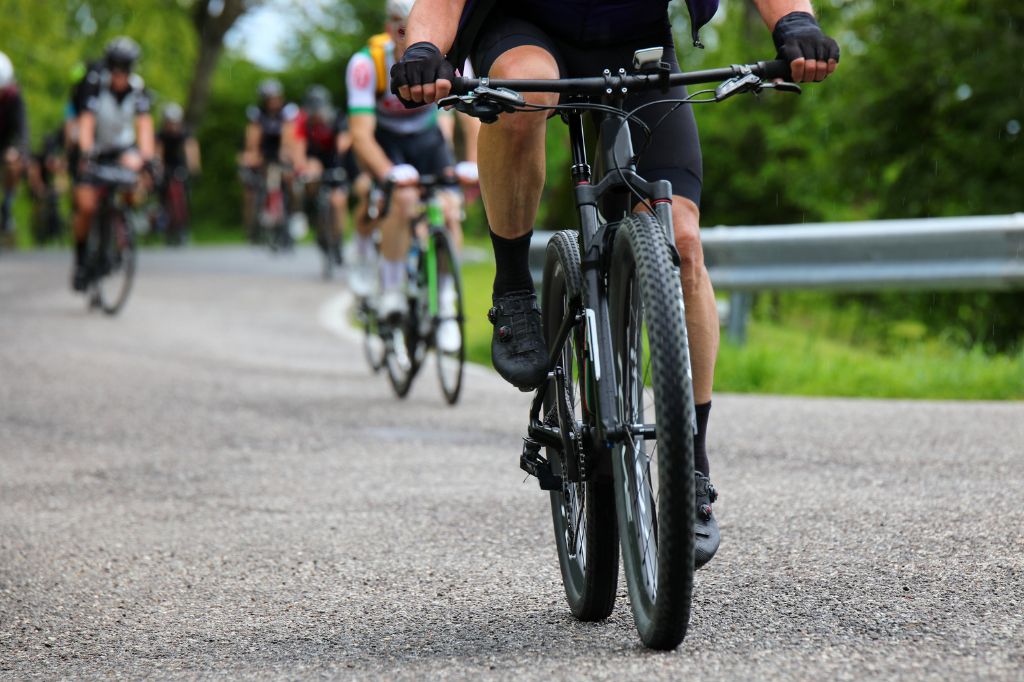
Cycling is a fantastic low-impact workout that’s great for cardiovascular health, muscle strength, and endurance, but if you’re dealing with knee pain when cycling, it can quickly take the enjoyment out of your ride. Whether you’re a weekend rider, daily commuter, or competitive cyclist, knee discomfort isn’t something to ignore.
At Orthopedic Specialty Institute, we frequently treat active individuals with cycling-related joint pain. The good news? Most causes of knee pain from cycling are preventable with the right bike setup, technique, and conditioning. Here’s what you need to know to keep your knees strong and pain-free on every ride.
Why Does Cycling Cause Knee Pain?
Despite being low-impact, cycling still puts repetitive stress on the knees, especially when your form, equipment, or training routine is off. Unlike running, which involves impact, cycling-related knee pain often comes from overuse or mechanical issues, such as poor alignment or improper bike fit.
Some of the most common causes of knee pain when cycling include:
- Saddle or seat position that’s too high or too low
- Incorrect pedal alignment or cleat positioning
- Sudden increase in riding intensity or duration
- Weak or imbalanced leg muscles
- Poor pedaling technique or cadence
Let’s take a closer look at how to prevent these issues before they turn into persistent knee problems.
1. Get a Proper Bike Fit
One of the most effective ways to prevent knee pain is to make sure your bike is fitted properly to your body. Even small adjustments to your saddle, pedals, or handlebars can make a big difference in joint health.
Key adjustments to focus on:
- Saddle Height: A seat that’s too low puts excessive stress on the front of the knee (patellar area), while one that’s too high can cause strain in the back of the knee. Your knee should have a slight bend (around 25–35 degrees) at the bottom of the pedal stroke.
- Saddle Position: The saddle should not be too far forward or backward. When the pedals are horizontal, your front knee should align with the ball of your foot.
- Cleat Alignment: If you’re using clip-in pedals, make sure your cleats are properly positioned. Poor alignment can lead to rotational stress on the knee.
Getting a professional bike fitting is highly recommended, especially if you ride frequently or competitively.
2. Warm Up Before You Ride
Cold, stiff muscles and joints are more prone to strain and injury. Before hopping on your bike, take a few minutes to get your body ready for movement.
Pre-ride warm-up ideas:
- Light dynamic stretches for the quads, hamstrings, calves, and hips
- 5–10 minutes of easy pedaling at a low resistance
- Gentle foam rolling for tight muscle groups
A proper warm-up helps increase circulation, loosen the joints, and reduce your risk of developing knee pain during or after your ride.
3. Strengthen Supporting Muscles
One common reason for knee pain while cycling is muscle imbalances, especially weak hips, glutes, or quads. When certain muscles aren’t pulling their weight, the knees take on more stress.
Strengthening exercises to consider:
- Glute bridges and clamshells
- Wall sits and squats
- Step-ups and lunges
- Hamstring curls and calf raises
Incorporating core and lower body strength training into your weekly routine can improve overall stability and reduce strain on your knees while cycling.
4. Mind Your Cadence and Technique
Cycling at a low cadence (pedaling slowly with high resistance) may feel like you’re building strength, but it can also overload your knees. Aim for a cadence of 80–100 RPM to distribute force more evenly and reduce repetitive stress.
Other technique tips:
- Maintain a smooth and circular pedal stroke, not just pressing down.
- Keep your knees tracking straight and avoid letting them flare out.
- Don’t lock out your knees at the bottom of the pedal stroke.
5. Avoid Overtraining
Suddenly increasing your mileage, climbing too many hills, or pushing through pain can lead to overuse injuries. Give your body time to adapt to changes in your cycling routine.
Follow the 10% rule:
Don’t increase your weekly mileage or intensity by more than 10% per week. Rest days are just as important as training days, allowing your joints and muscles time to recover.
6. Stretch and Recover Post-Ride
Tight muscles can pull on the knee joint, affecting alignment and increasing pain. After each ride, spend time stretching your:
- Quadriceps
- Hamstrings
- Calves
- Hip flexors
- IT band
You can also try foam rolling or massage to release tension and promote circulation in sore areas.
When to See a Specialist for Knee Pain
If you’ve already made adjustments and still feel persistent knee pain when cycling, it may be time to seek professional care. You could be dealing with an underlying issue such as:
- Patellofemoral pain syndrome (runner’s knee)
- IT band syndrome
- Meniscus irritation
- Tendinitis or bursitis
At Orthopedic Specialty Institute, our team can assess the cause of your knee pain and develop a treatment plan that fits your activity level and goals, whether that means physical therapy, bracing, or personalized rehabilitation.
Ride Strong Without the Pain
You don’t have to live with knee pain when cycling. With proper bike setup, strengthening exercises, and smart riding habits, you can stay active and enjoy the ride without sacrificing your joint health.
If knee pain is interfering with your cycling or daily activities, click here to request an appointment with Orthopedic Specialty Institute. We’ll help you get to the root of the issue and guide you toward a safe, pain-free recovery—so you can keep doing what you love, mile after mile.
